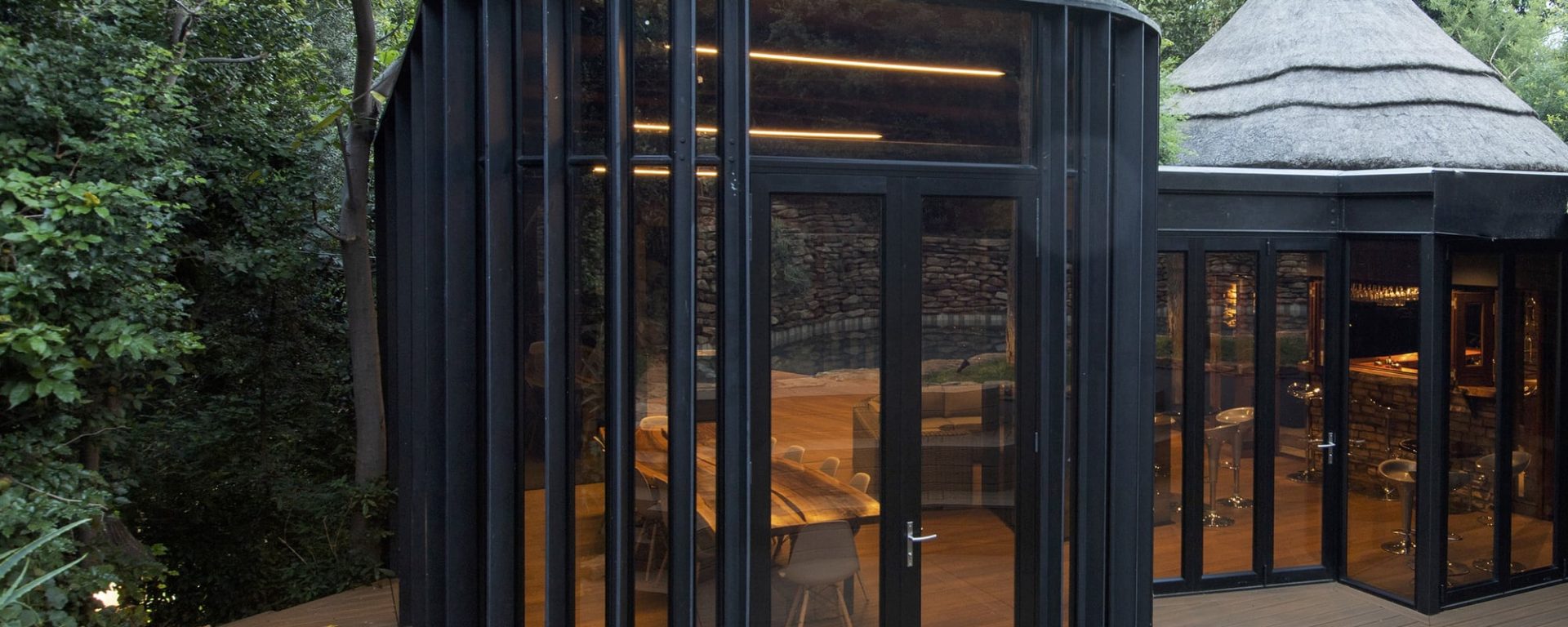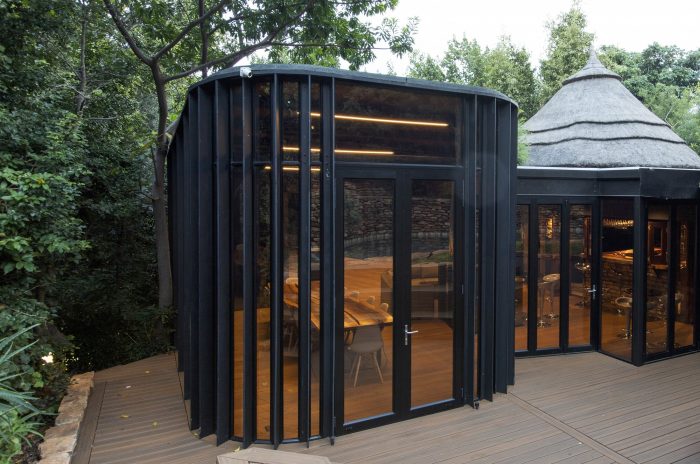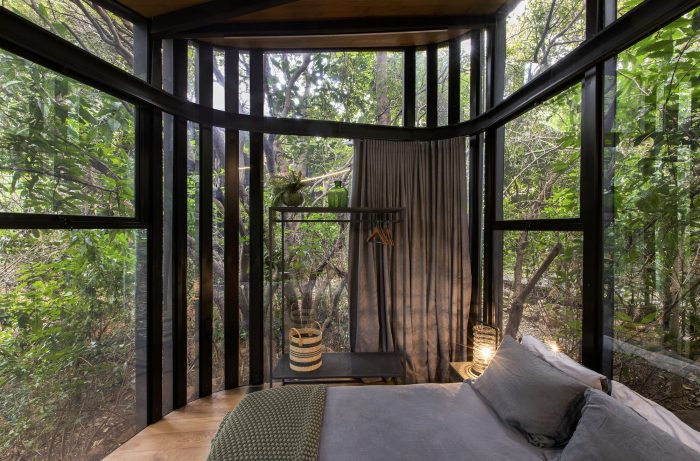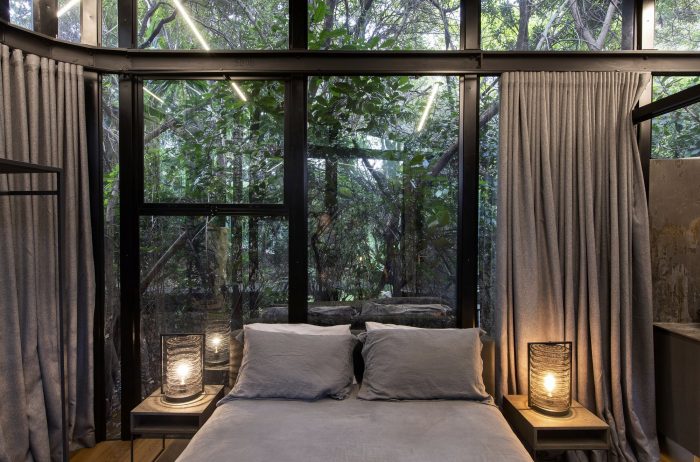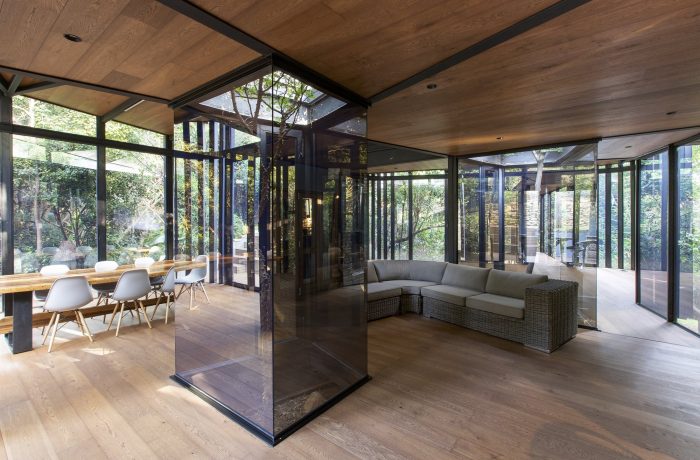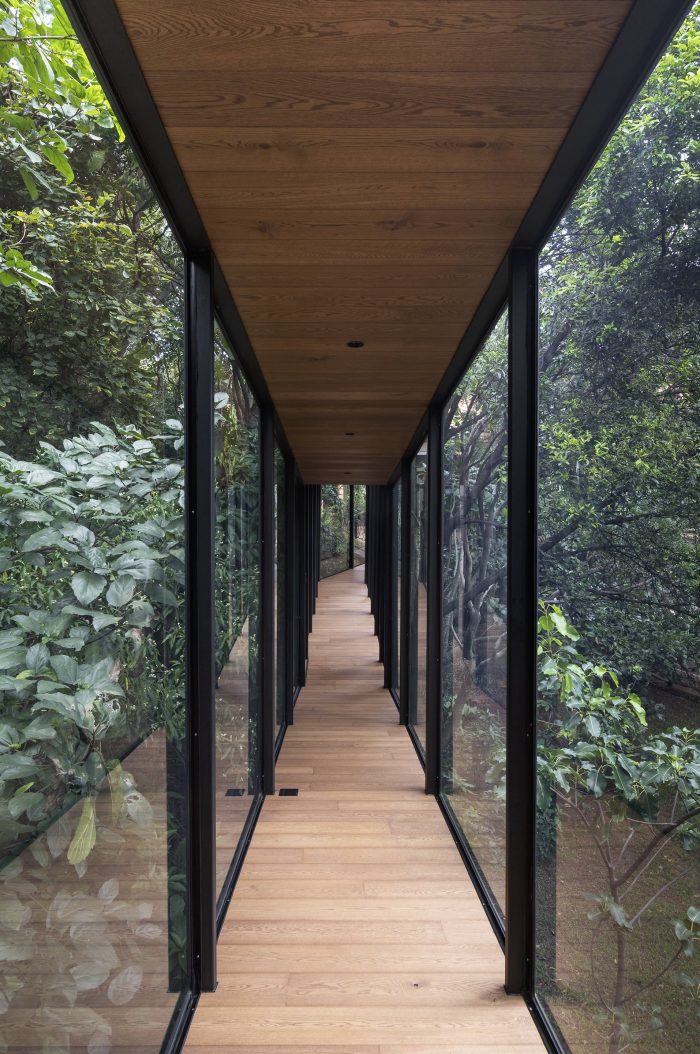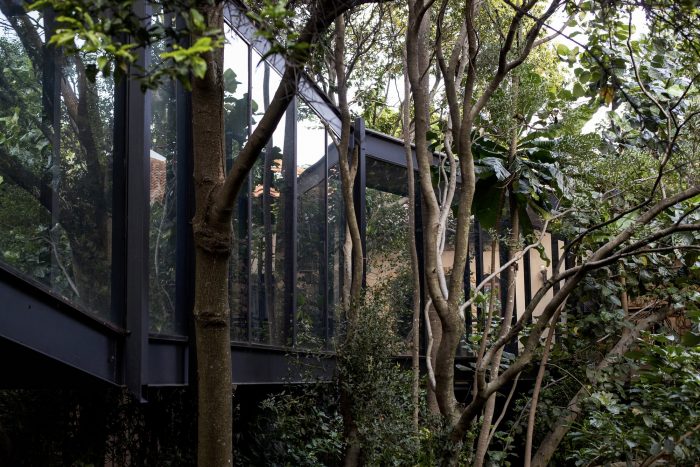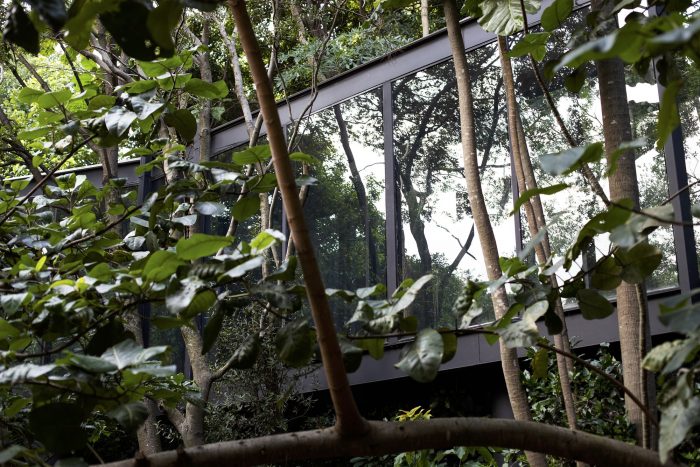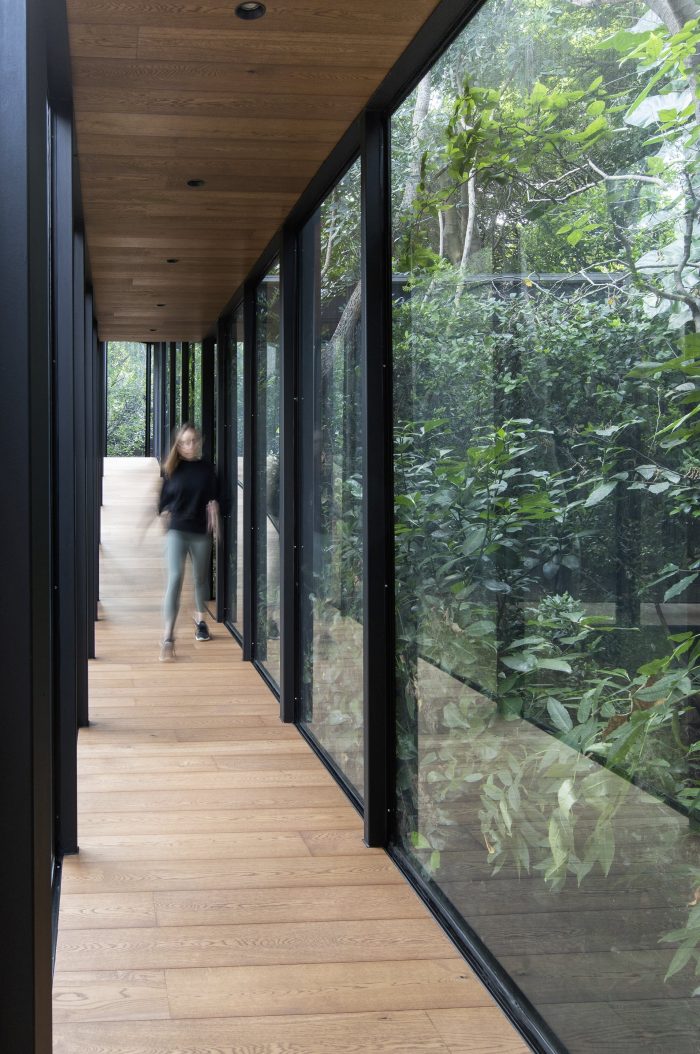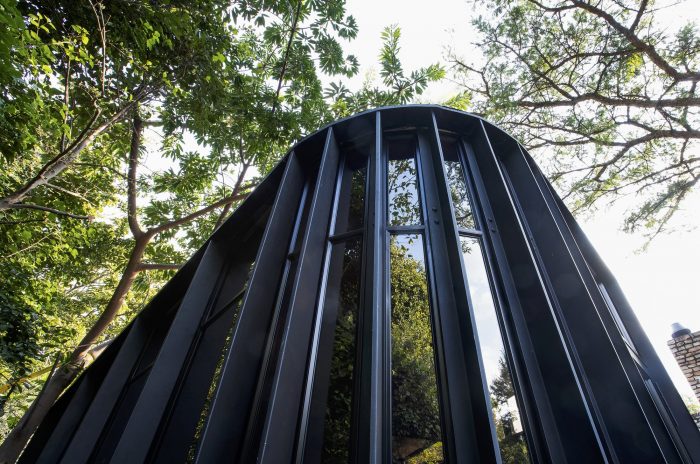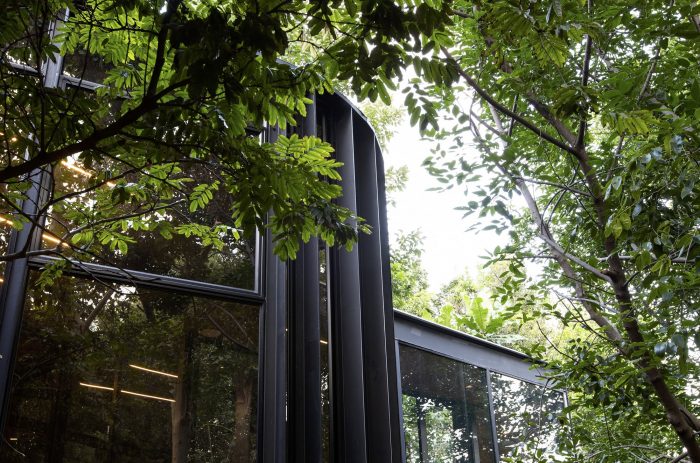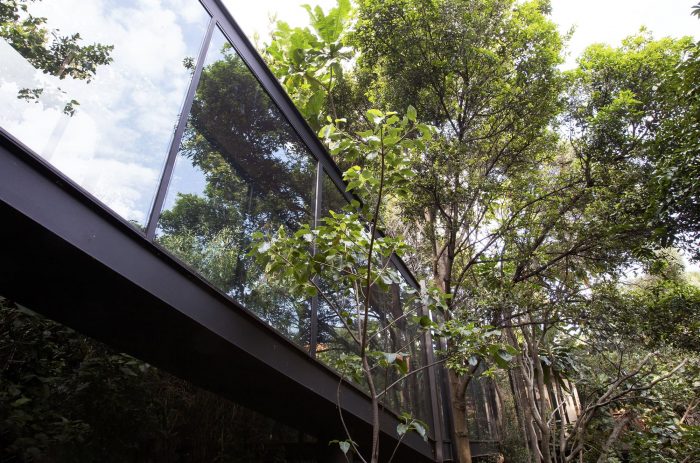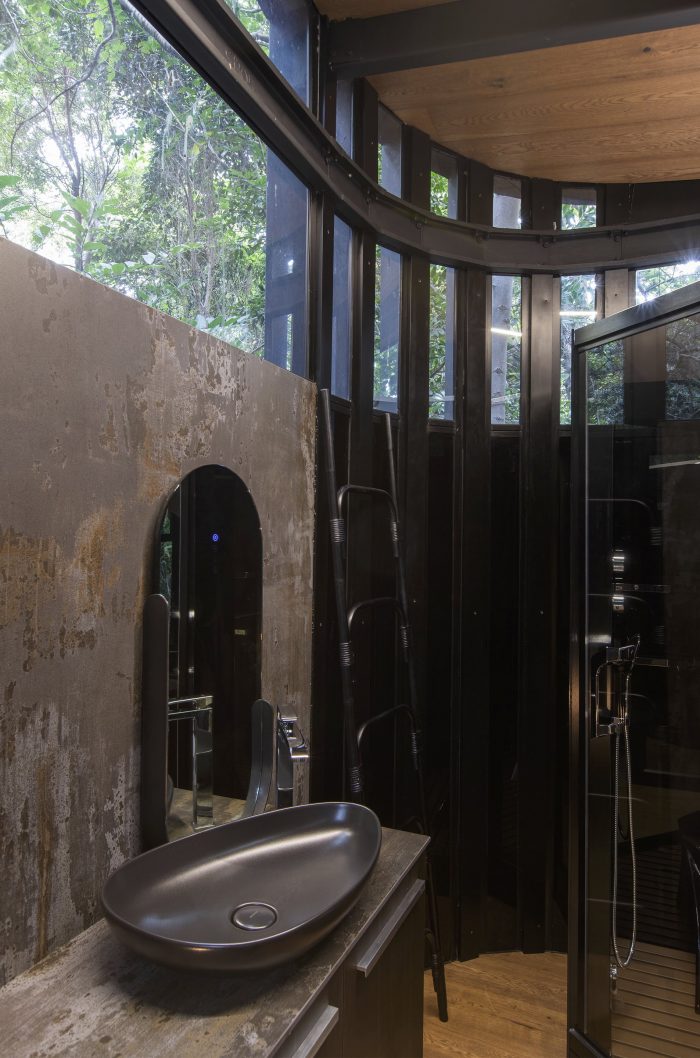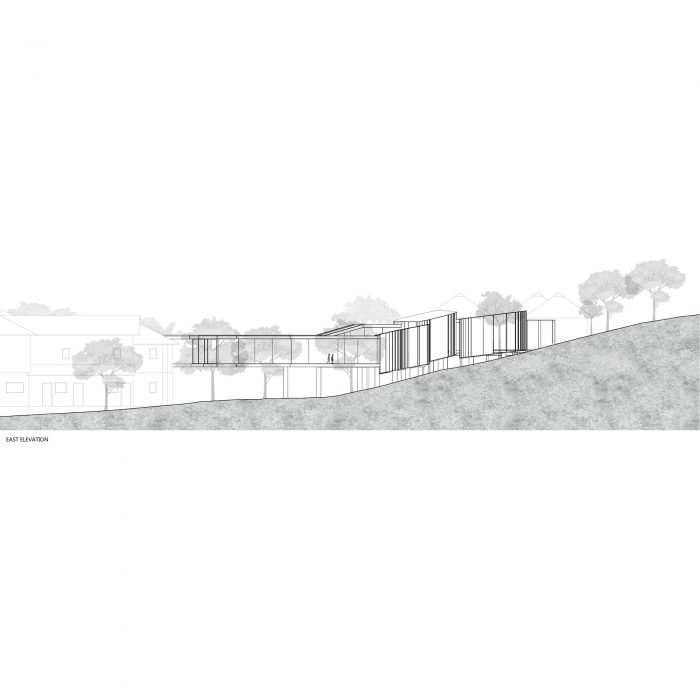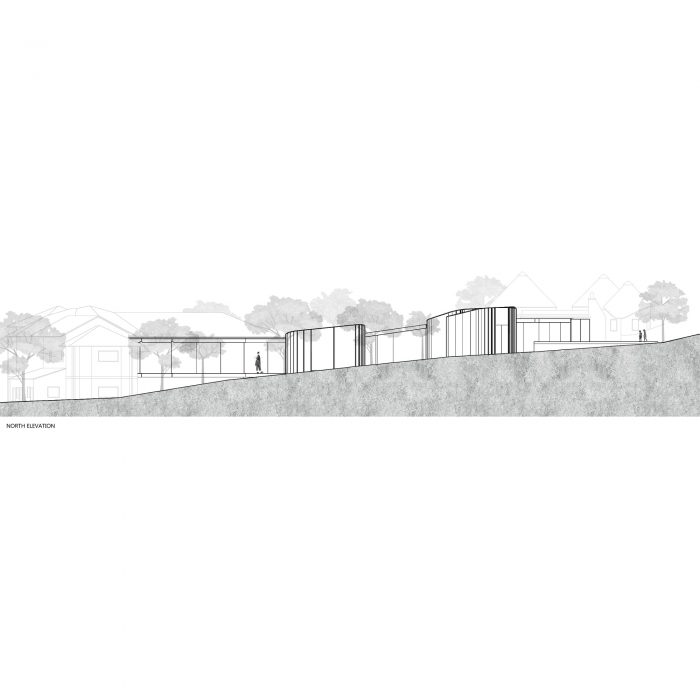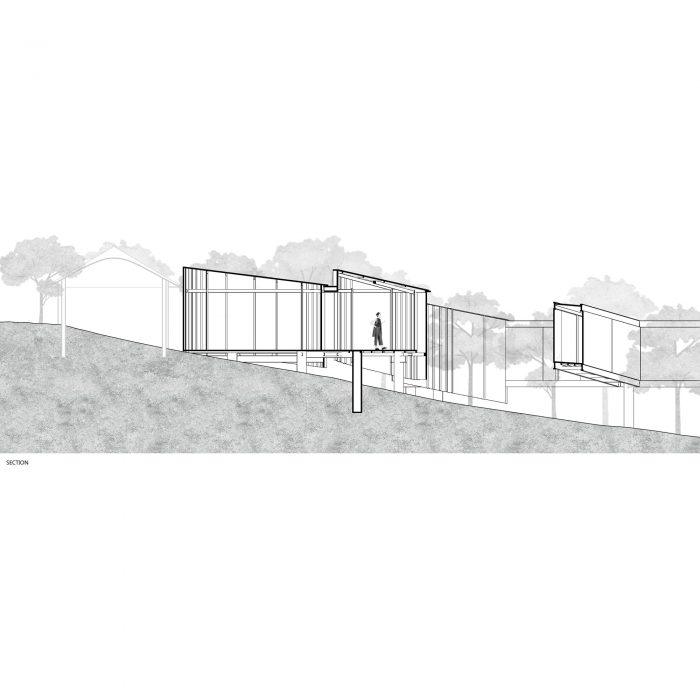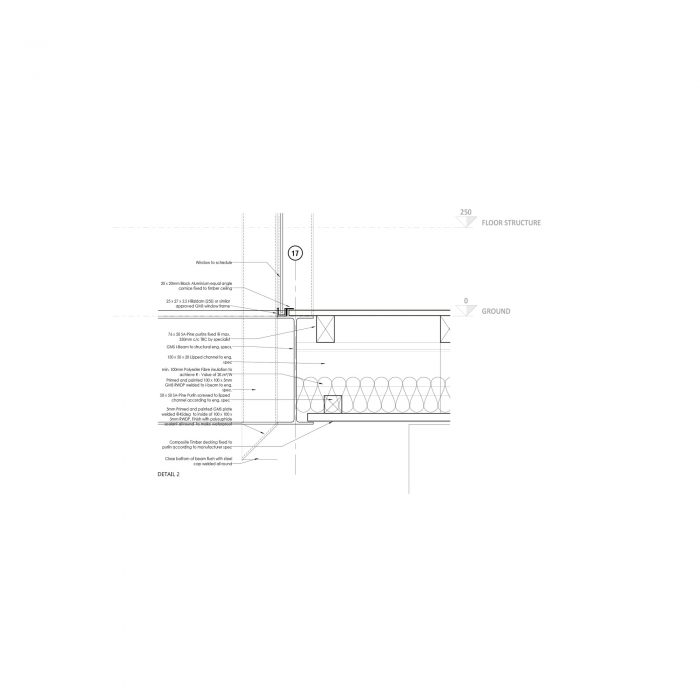该结构将南非比勒陀利亚布朗伯格山南坡上现有的主要用于娱乐的住宅和外围建筑连接起来。这些空间只通过一条在森林地面上建造的木制走道连接起来,走道经过一个瀑布,瀑布进入一个由天然石头建造的深水池。鸟儿的歌声切切实实地悬挂在本土树冠的叶子之间,光线透过阴凉的空气,在雾气的束缚下过滤。
The structure links an existing residence and outbuilding, used primarily for entertainment purposes, on the southern slope of the Bronberg Mountain in Pretoria, South Africa. The spaces were only connected by a timber walkway constructed on the forest floor that leads past a waterfall cascading into a deep pond constructed of natural stone. The songs of birds hang tangibly between the foliage of the indigenous tree canopy where light filters through the cool shaded air in beams of the misty haze.
干预措施通过一条穿梭于森林中的悬空玻璃走道促进了现有建筑之间的联系,该走道被特意放置在没有走道的地方,以增加对森林的体验。此外,该平台在一个较高的水平上与森林接触,提供了一个不寻常的视角。隐藏在森林中心的卧室提供了一个像鸟巢一样的空间,可以在斑驳的晨光中醒来。客户希望扩大外屋的娱乐区,以容纳一个游戏区、一张餐桌和一个休息室。
The intervention facilitates access between the existing buildings by means of a suspended glazed walkway that weaves through the forest, placed deliberately where the walkway did not lead to augment the experience of the forest. Furthermore, the platform engages the forest at an elevated level, providing an unusual perspective. A bedroom tucked in the center of the forest provides a nest-like space from which to awaken in the motion of dappled morning light. The client wanted to extend the entertainment area of the outbuilding to accommodate a play area, a dining table, and a lounge.
至关重要的是,由于施工活动和完成的建筑,对场地的干扰程度要保持在绝对最低的水平。整个钢结构被悬挂在地面上,只有在需要结构支撑的地方才有支撑。特定的濒危树木被确定下来,并作为重点元素纳入设计中。外墙要么围绕着这些树木旋转,要么内部被刺穿以展示。
It was essential that the extent of disturbance to the site, as a result of the construction activities and completed building, be kept to an absolute minimum. The entire steel structure is suspended above the ground and is supported only where it is necessary for structural support. Specific endangered trees were identified and integrated into the design as focal elements. The facade either twists around these trees or the interior are punctured to be displayed.
建筑物的设计不仅是为了消失在森林中,而且是为了在窗户上反映出森林,从而重复感知到的森林密度。外骨架 “是一系列垂直的钢结构部分,不仅促进了这种方向性的过渡,而且还承载了屋顶。这个元素的轻盈、色彩和重复提供了一个有质感的表面,将单体分割开来,并掩盖了结构。除其他因素外,建筑形式还受到上述树木的位置以及地形的影响。外墙的垂直平面是有角度的,以复制场地在空间位置的确切轮廓,而屋顶是沿着这些边缘放置的。平面上吊舱的弧形转角减少了方向性的突然变化,软化了结构和森林之间的门槛。
The building was designed to, not only, disappear in the forest, but to reflect it in the windows thereby duplicating the perceived forest density. The “exoskeleton” is a series of vertical steel sections that not only facilitates this directional transition but also carries the roof. The lightness, color, and repetition of this element provide a textured surface that fragments the monolith and camouflages the structure. The building form was informed, among other factors, by the position of the trees as mentioned above as well as the topography. The vertical planes of the facade are angled to replicate the exact contours of the site at the position where the spaces are positioned, and the roof was placed along these edges. The curved corners of the pods on the plan reduce an abrupt change in directionality and soften the threshold between structure and forest.
弥合主宅和外围建筑继承的二元风格的建筑问题构成了一个有趣的挑战。主宅采用了典型的托斯卡纳风格,这种风格在较富裕的社区被广泛采用,与植根于南非农村地区传统乡土建筑的茅草屋形成对比。因此,建筑解决方案不仅面临着特定地点的挑战,而且还面临着南非更大的困境。因此,问题是,建筑如何能够弥合这一空间?在这里,建筑回应试图通过利用基本的建筑工具,如规模、形式、材料、纹理和颜色,而不是应用类似的或另一种建筑风格,来协商这种二元对立。
The architectural issue of bridging the inherited dichotomous styles of the main house and outbuilding posed an interesting challenge. The main residence, constructed in a typical Tuscan style, which is adopted quite widely in the more affluent neighborhoods, contrasts the thatched roof outbuilding that is rooted in the traditional vernacular architecture of South Africa’s rural areas. The architectural solution therefore not only faces this challenge in a site-specific sense but also, within the larger South African predicament. The question is, therefore, how can architecture bridge this space? Here, the architectural response attempts to negotiate this dichotomy by utilizing basic architectural tools such as scale, form, materials, textures, and color rather than applying a similar, or another architectural style.
Architects: Drawbox Design Studio Architects
Area : 192 m²
Year : 2019
Photographs :Tash Laurent
Manufacturers : Oggie Hardwood Flooring, Pronk Aluminium
Engineering Team : Destech Structural Solutions
Project Management : HS Timber Projects
Design And Project Architect : Carlu Swart
City : Pretoria
Country : South Africa

